It’s a myth that standing under a tree during an electrical storm is safe. In fact, it’s the second leading cause for lightning deaths. Rather, you should hold your ankles and bend down to the ground so that the lightning can pass directly through you if you’re hit. Knowing facts, like wildfires spread faster uphill and that only a few inches of floodwater can be deadly, may save your life one day.
Bright Side wants everyone to stay safe and unharmed, especially in the case of an emergency, which is why we’re sharing some important survival tips for you to learn. Don’t forget to check the bonus section at the end for an extra tip.
1. Hold your ankles in a thunderstorm.
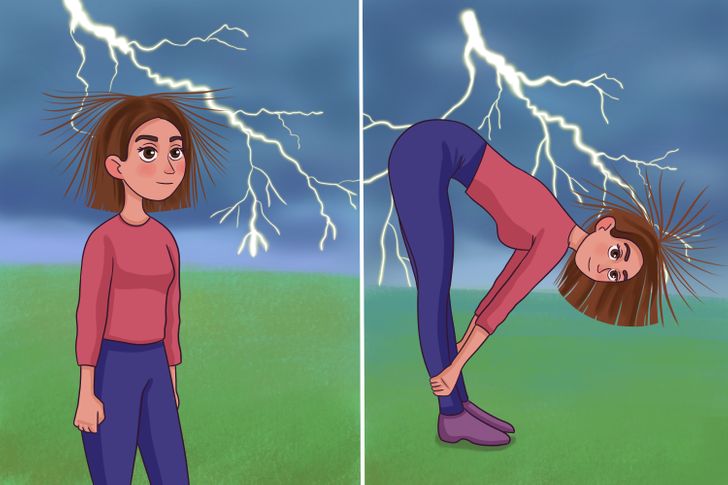
If you find yourself outside during an electric storm without a safe shelter, you should put your feet together and grab your ankles with your head tucked down as far as possible. This will help to protect you from the lightning by giving it a faster route through your body to the ground. This is a better option than standing under a tree or lying flat on the ground, which are dangerous.
2. Run a warm soapy bath for poison ivy rashes.
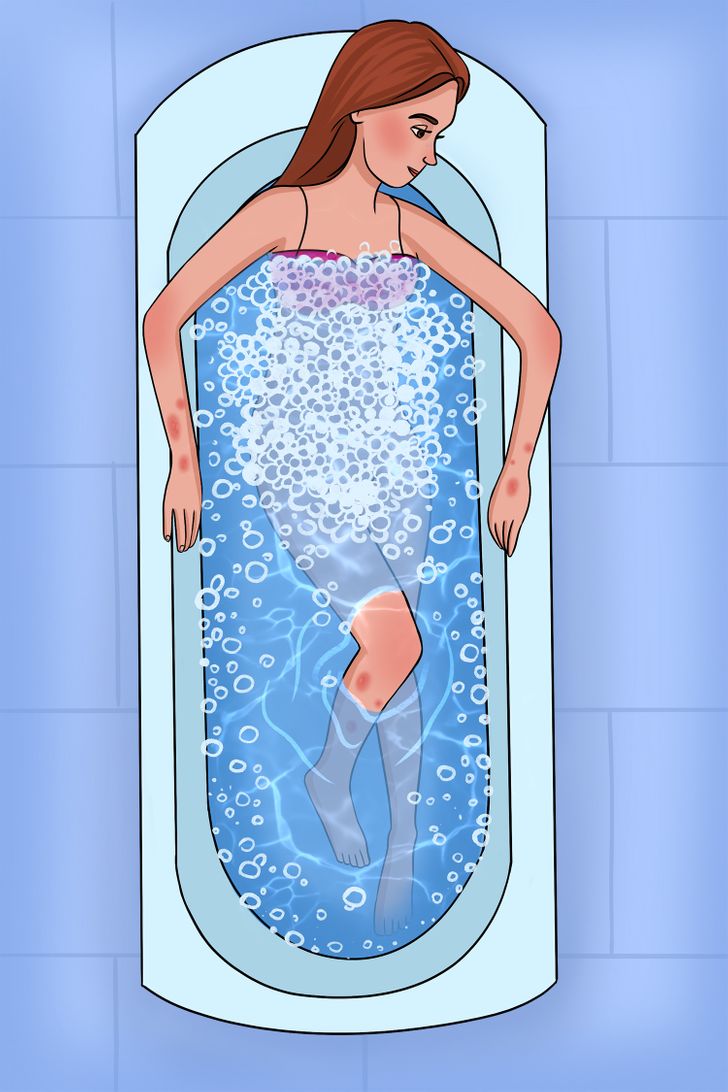
To treat a mild poison ivy rash it is recommended that you wash it in warm soapy water as soon as possible. Taking short lukewarm baths can help to remove the irritating poison ivy oil that is causing the burn in the first place. You can also try adding a cup of baking powder to the bathwater to further help with the itching.
However, if the rash is more serious and you are experiencing a fever, swelling, and it is covering most of your body, then it is advised that you see a doctor.
3. During a flood, do not walk through water above 6 inches.
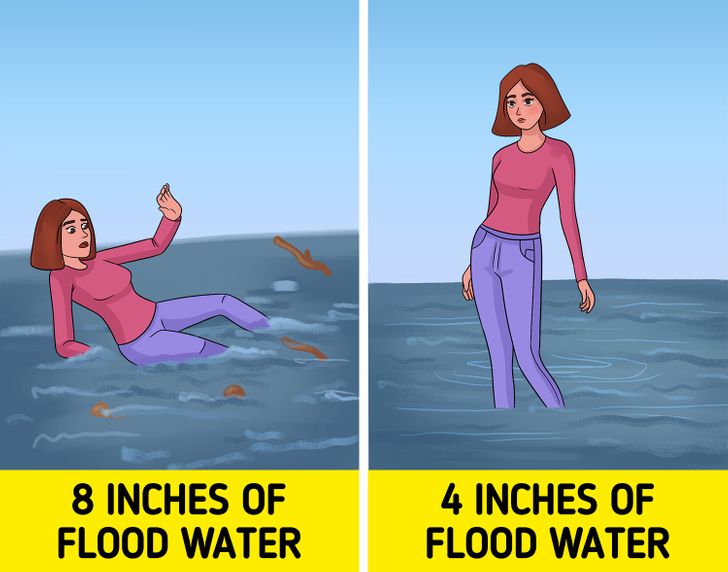
Water can be a true force of nature, especially during a flood when it only takes 6 inches of moving water to knock you off your feet and carry you away. Moreover, just 1 foot of floodwater has enough power to sweep your car away. So even if the water doesn’t seem to be too deep or fast it is best to avoid it at all costs, or find still water that you can walk through.
4. Stay on low ground during a wild fire.
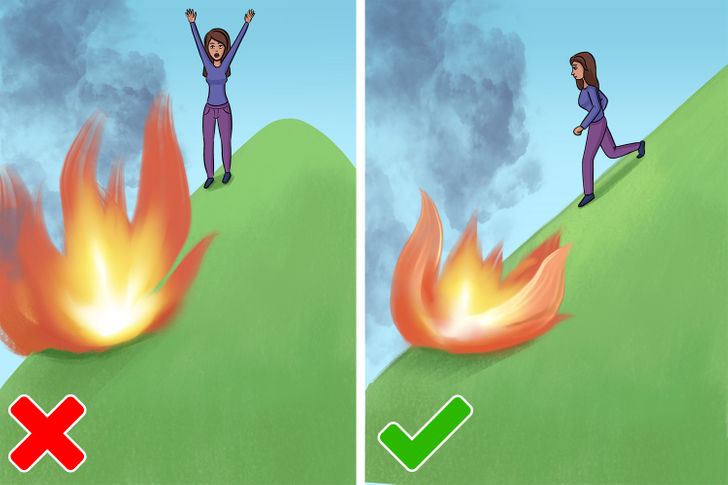
What few people may know is that fire actually travels faster uphill as the hot air rises. In fact, its speed can double every 10 degrees of the upward slope. Therefore, you should avoid high ground if possible or run to the lower slope on another side of the hill. If you find yourself trapped by the flames, then you can run toward the fire to find a break in the flames where you can cross the fire’s edge.
5. Learn how to wait out a dust storm.
If you find yourself in a situation where a sandstorm is approaching and you can’t wait it out in a car or a shelter, then find something to hide behind. This can be a rock or a tree. Cover your nose and mouth with a piece of fabric (like a bandana) to protect them and wait for the storm to pass. It is best if you can wet the piece of fabric before putting it on.
6. Know where to safely shelter from a tornado.
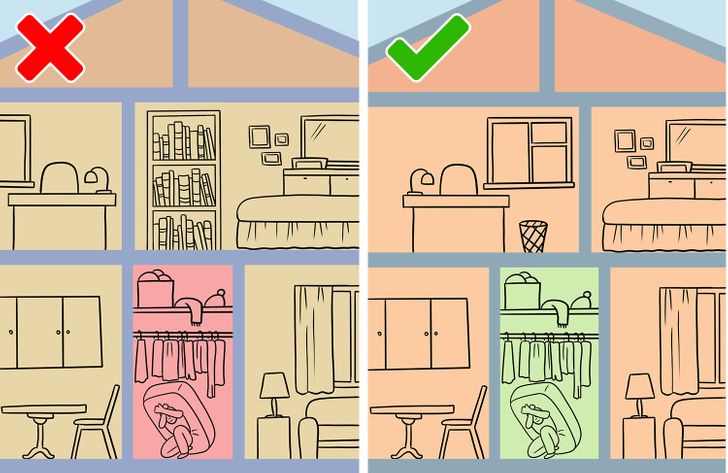
The key thing to remember is to get as many walls as possible between you and the wind and to stay on the lowest floor. This can mean going to an interior bathroom or hallway, and covering yourself with a mattress or crawling under a workbench. If you’re in a multi-story building then keep in mind what’s above you so that you don’t place yourself under a heavy object that may fall from the room above.
7. Jump into water the correct way.
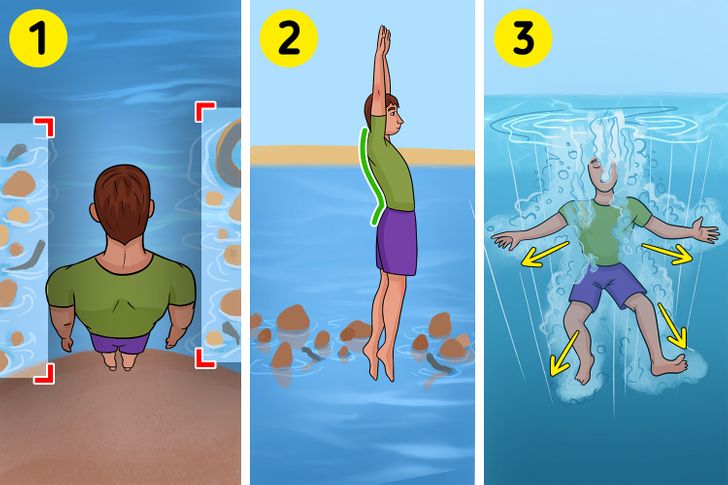
8. Use the star symbol for the most direct route outside.
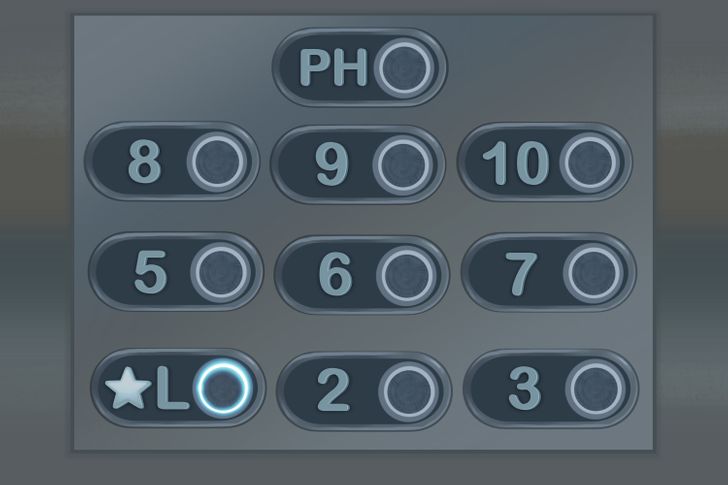
This little-known fact can come in very handy in case there’s an emergency where you need to exit a building fast. The star symbol will show you which floor has the most direct exit out of a building. This is also something important for first responders when there’s an emergency in a building — for a quick exit.
9. Use a soda can and a water bottle to make saltwater drinkable.
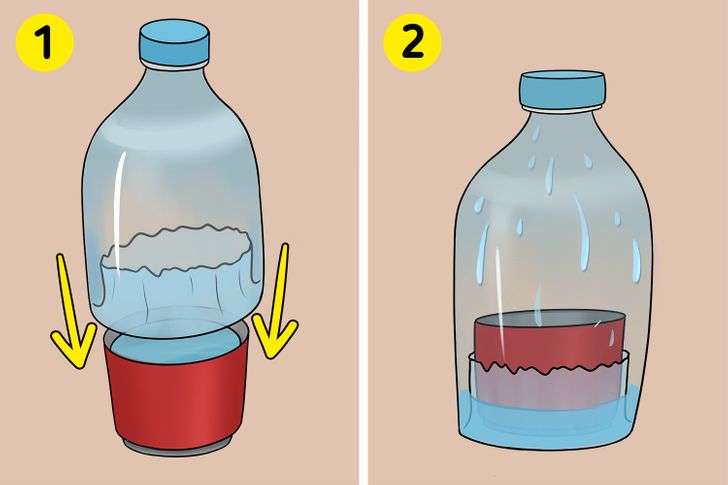
In order to turn saltwater into drinkable water, you’ll need to cut the top off a soda can and fill it with saltwater. Next cut off the bottom of a larger plastic water bottle and turn the bottom up to make a rim. Place the can inside the water bottle, leave them in the sun, and wait. The water will evaporate and filter down into the rim, removing the salt.
Bonus: Use socks to reduce the itchiness of mosquito bites.
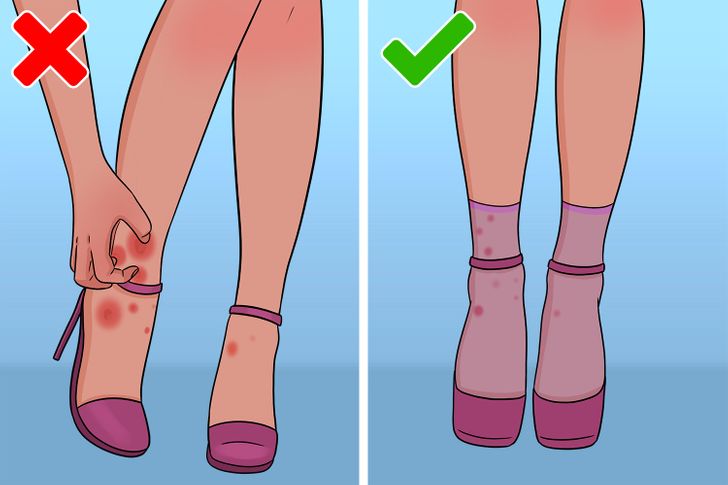
We all know how nasty and uncomfortable mosquito bites can be, especially if they get infected from all of our scratching. One internet user found that wearing socks prevented the itchiness of their bites. The tightness of the fabric on your skin will probably leave you not needing to scratch them every 2 seconds.
What useful tips do you know that others might not know about? Have you ever witnessed a natural disaster, like a flood?












